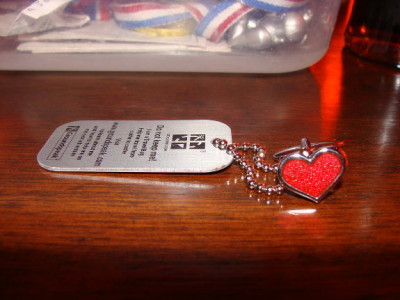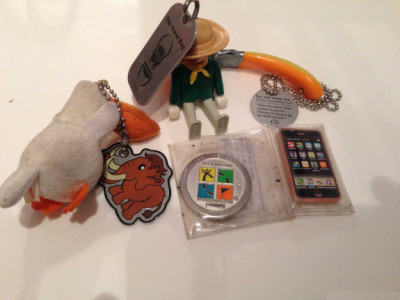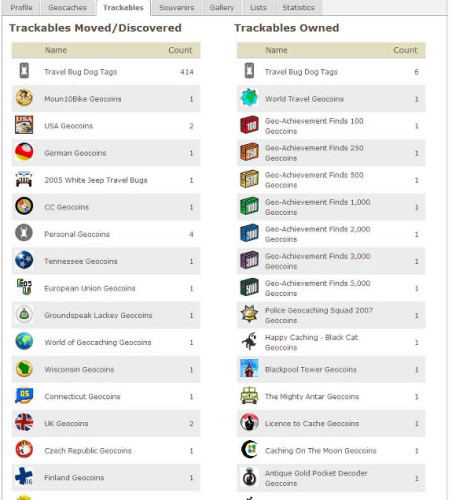Becoming a geocacher can be slightly overwhelming. Not only do you have to learn how to use a GPSr to get to your location and then hunt for a geocache, but there’s also a wealth of information, acronyms and unwritten do’s and don’ts to contend with.
One of the areas that is a constant source of confusion are trackables. I wrote an article last year introducing what trackables were and how you went about logging them but there are a number of unwritten rules that a lot of newbies get wrong. So here to help them out are five things they never tell newbie geocachers about geocoins and travel bugs.
1. You Don’t Need To Swap
You know the rule right? If you take something out of a cache, you need to replace it with something of equal or greater value. A lot of new cachers don’t realise that this only applies to the toys and swaps the cache owner and subsequent visitors have placed in the cache. When it comes to trackables (i.e the geocoins and travel bugs), you don’t need to swap it with another trackable in your possession. If you see a trackable in a cache and want to move it on, just take it and log it as picked up. Sure you’ll encounter the odd cache owner trying to enforce rules on removing trackables from their cache, but they’re misinformed. We nickname those types of caches ‘Travel Bug Prisons’ and the best thing you can do is free the occupants.
You’re also not limited to picking up a single trackable. If you want to empty a cache of all its trackables then by all means do so, although if there are a large number and the cache is regularly visited, consider leaving a few for the next geocacher.
2. Do not grab
So you find a travel bug or geocoin in a cache and take it to move on. But when you come to log it, either at the cache via smartphone, or once at home and sat at your computer, you see it as listed as being in another geocacher’s possession. You’d probably think that the right thing to do would be to log a ‘grab’ to move it from the other geocacher’s digital possession to yours. And you’d probably be wrong. You see, this causes all sorts of problems. Firstly a lot of geocachers might not log their finds and trackable drops as they do them. This might be by choice or because they use a GPSr and need to wait until they get home to plug in the device and log their caches. Some might even be on vacation and not planning to log their finds until they return home.
Grabbing also causes problems for the trackable owner as well. If you grab the trackable from another geocacher, it won’t be logged as visiting the cache it was placed in and will mess up the record of mileage travelled.
The best advice is to give a geocacher up to a week to log dropping off the trackable. You can still log your finds, and even post a note on the trackable page to say that it is in your possession and you are waiting for the current holder to drop it off. If after a week, it’s still not been dropped off, send the holder a quick message. Sometimes it’s just a case that they’ve not got round to it yet but if you still get no joy, grab the trackable and do the owner a favour by ‘dipping it’ into the geocache you found it. You don’t need to log a find, you can just post a note to the cache page if needed (and then delete it once the trackable is dipped).
3. Just move them on
You find a trackable and upon logging it find, for example, that its mission is to travel to Russia. Newbies often make the mistake of hanging onto a trackable waiting to run into another geocacher who can complete the trackable’s mission. Worse still is when a newbie thinks to themselves that they might be able to aid the trackable on its mission but it’ll be a good number of months before they’ll be able to do so.
Just keep them moving!
Sometimes you’ll come across a trackable with incredibly restrictive goals (like it has to be put in caches with a z in its name or stay within a state or county). If you can aid the trackable on its way without going too far out your way, then fine, but don’t sit there holding onto the trackable waiting for a new cache to be published that matches the goal. If you can’t help it, just drop it off in the next available cache and hope that the next person who picks it up will be able to aid it better.
4. Don’t set restrictive goals
Which brings me onto the next point. If you want to release a trackable into the wild, don’t make the mistake of setting a restrictive goal. Also don’t expect a geocacher to spend the time looking at the trackable’s goal before taking it out of a cache (even if it’s been attached to it). They are not going to spend time trying to get a cell signal to look up a trackable’s details when it’s pouring with rain and the cache is getting wet.
Some geocachers travel great distances to go for their week’s caching and before they notice a request to keep it within ten miles of a location, they are home, several hundred miles away. Those situations can be as frustrating for the finder as much for the trackable owner.
Instead set broad goals and don’t worry when geocachers aren’t able to fulfil them every time. The chaos of trackables is part of their appeal. I’ve picked up a trackable and taken it back home, hundreds of miles away only to find its mission was to meet up with another trackable released half a world away, that at the time I picked its counterpart up was just half a mile down the road. And I’ve had a trackable of mine just seem to move between the same couple of caches in Scotland before suddenly being whisked away to Antarctica. Sometimes the journey is more interesting than the goal.
5. They go missing
 This one cannot be stressed enough. Passing from person, being placed in Tupperware boxes or ammo cans in the wild, trackables go missing all the time. It’ll happen sooner or later. It might be a mile down the road from where you released it, or it could be after it’s been round the globe several times. It’s just a matter of when.
This one cannot be stressed enough. Passing from person, being placed in Tupperware boxes or ammo cans in the wild, trackables go missing all the time. It’ll happen sooner or later. It might be a mile down the road from where you released it, or it could be after it’s been round the globe several times. It’s just a matter of when.
Of course, there are numerous stories of trackables going missing only to turn up sometimes years later in a totally different part of the world. But if you put a trackable out there, do so with the mind-set that you are never going to see it again. It’ll either get lost or be travelling the far reaches of the planet. Just enjoy its journey for however long, or short, it lasts. For every trackable that disappears after moving only ten miles, there are those that seem to be constantly travelling around the globe.
Like everything with geocaching, you’ll always encounter people with an entirely different perspective on what’s the “right thing to do”, especially when it comes to general geocaching etiquette. We all have our personal bugbears when it comes to geocaching and no doubt as you progress you’ll find some of your own. But if you’re a new geocacher who has yet to start moving trackables, the above is good practise to follow.
If you’re a seasoned geocacher, what advice do you wish you’d been told about trackables when you first started out? Tell us in the comments below!



Thank you for this post. My son is working on his Geocaching Merit Badge for Boy Scouts. One of the requirement has an option for placing a Travel Bug and monitoring its movements for 30 days…not very long but we are excited to see its long term journey! The question I have is about placing it initially. Does he need to make his own cache to start it off or can he start it off by placing it into a cache he has found? Thanks.
Hi Ann,
Your son can either make a geocache (which would probably be the hardest thing to do) or just place it in a cache. To place a cache you have to take a coordinate reading where the cache is.
https://www.youtube.com/watch?v=aqc8Rnl_fh8&list=PL939C3CBDC2F2F385&index=4
https://www.youtube.com/watch?v=sj31U_z9MFA&index=2&list=PL939C3CBDC2F2F385
Thanks for your clear article. I wish I read it sooner. Now I made the mistake of grabbing a TB in Turkey, because the holder did not log it for 5 days and I wanted the TB to move on. I now found out that indeed the extra milage has not been registered, but my mistake cannot be made undone. Shouldn’t Groundpeak make an extra optionion for retrieving a TB, even before it’s been logged as dropped off?
I wish that all trackable owners would put their trackable inside in a small bag together with its goal written on a notecard or piece of paper. It’s incredibly annoying if you want to take a trackable but don’t have time to sit there and look up the goal of every trackable in the cache, to see which ones, if any, you can help to reach their goal. If they have a note WITH them, you can see immediately where they’re headed and not take one to find out when you get home, that you can’t really help it, or worse, have taken it further from its goal. Always add a note to your trackable with its goal written on it! Please!!!
Interesting reading, thank you.
My main gripe about TBs is when I get to a cache and find the TBs listed on the inventory aren’t there. Someone has taken them, but neglected to log. I have sometimes contacted both the CO and the TB owner to let them know the TB is missing. I wish more cachers were aware that either the CO or TB owner can mark the TB as missing, remove it from the inventory and place in “unknown location” (If the TB is later found it can be grabbed and placed in its actual location)
I have started trying to make my logs clearer, instead of saying “picked up TB” I will actually name the TB, so if it goes missing the owner can more easily trace when it disappeared.
Good advice. On number two, I assume the person who dropped it has the code and log a grab and then dip it in the cache I found it in. I don’t fool around. Some people literally wait months to log their caches and trackables. To me? “Ain’t nobody got time for that!” 🙂